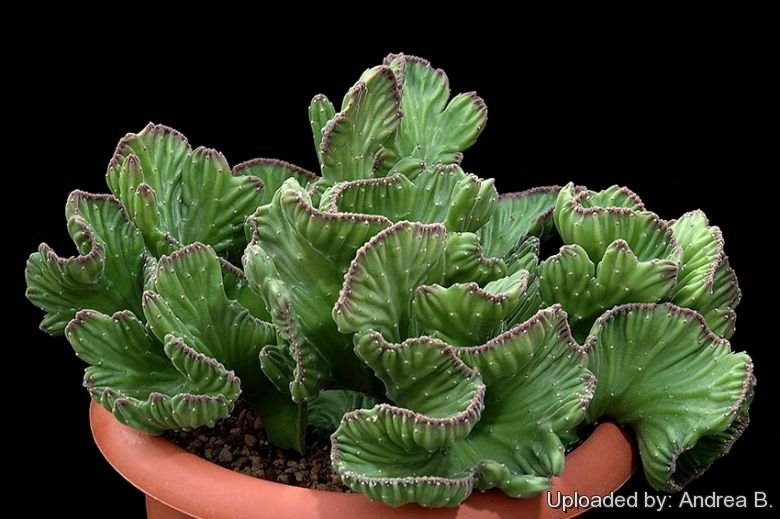
Stapelia leendertziae f. cristata Photo by: Andrea B.
Origin and Habitat: Garden origin (Nursery produced cultivar)
Synonyms:
See all synonyms of Stapelia leendertziae
Common Names include:
ENGLISH: Crested Rugose Cup Starfish, Crested Maroon Cup Starfish, Crested Star Flower, Crested Black Bells
Description: The standard Stapelia leendertziaeSN|11710]]SN|11710]] is one of the most peculiar of the stapelias with tufted creeping or procumbent stems that trail and hang down over the pot. It is famous for the very characteristic dark purple urn-shaped flower, which distinguish this species from all the other plants of the genus.
Stems: Pale green (or reddish in bright sun) and slightly furrowed.
Flowers: Deep cup-shaped / campanulate or more open in a star, dimension about 8 cm in diameter and 7 or 8cm long in late summer. They are purple-brown and the interiors is blackish purple or dark maroon which absorbs light so no detail can be seen; inside the cup is rugose, densely velvety, even short-hairy. Foul-smelling.
The crested form is very nice and will form readily a large, fascinating specimen with fan-shaped stems that hung down elegantly over the pot.
Subspecies, varieties, forms and cultivars of plants belonging to the Stapelia leendertziae group
Bibliography: Major references and further lectures:
1) Focke Albers, Ulrich Meve “Illustrated Handbook of Succulent Plants: Asclepiadaceae: Asclepiadaceae” Volume 4 Springer, 2002
2) Gideon Smith, Neil R. Crouch “Guide to Succulents of Southern Africa” Struik Nature, 01/nov/2009
3) Focke Albers, Ulrich Meve “Illustrated Handbook of Succulent Plants: Asclepiadaceae: Asclepiadaceae” Volume 4 Springer, 2002
4) Doreen Court “Succulent Flora of Southern Africa” CRC Press, 01/giu/2000
5) Clive Innes “Complete Handbook of Cacti and Succulents” Van Nostrand Reinhold Company, 01/dic/1981
6) A.C.White & B.Sloane “Stapelieae” ( White & Sloane) ed. 2 3: 855 Abbey San Encino Press, 1937
7) Luckhoff “The Stapelieae of Southern Africa” Capetown, A.A. Balkema 1952
8) Bruyns, P.V. 2005. “Stapeliads of southern Africa and Madagascar.” Vol. II. Umdaus Press, Hatfield.
9) James Cullen, Sabina G. Knees, H. Suzanne Cubey “The European Garden Flora Flowering Plants: A Manual for the Identification of Plants Cultivated in Europe, Both Out-of-Doors and Under Glass” Cambridge University Press, 11/ago/2011
 Stapelia leendertziae f. cristata Photo by: Julio C. García
Stapelia leendertziae f. cristata Photo by: Julio C. García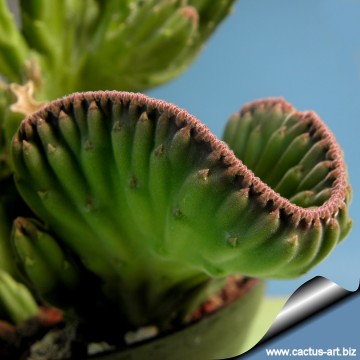 Stapelia leendertziae f. cristata Photo by: Cactus Art
Stapelia leendertziae f. cristata Photo by: Cactus Art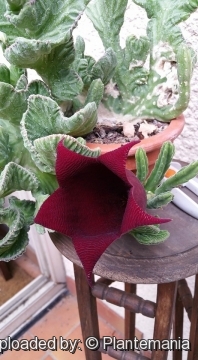 Stapelia leendertziae f. cristata. The flowers develops only in normal stems (not crested). Photo by: © Plantemania
Stapelia leendertziae f. cristata. The flowers develops only in normal stems (not crested). Photo by: © Plantemania Stapelia leendertziae f. cristata Photo by: Valentino Vallicelli
Stapelia leendertziae f. cristata Photo by: Valentino Vallicelli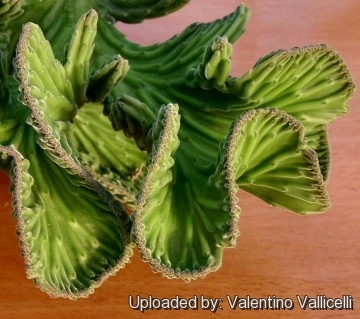 Stapelia leendertziae f. cristata Photo by: Valentino Vallicelli
Stapelia leendertziae f. cristata Photo by: Valentino Vallicelli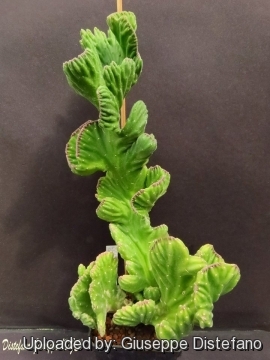 Stapelia leendertziae f. cristata Photo by: Giuseppe Distefano
Stapelia leendertziae f. cristata Photo by: Giuseppe Distefano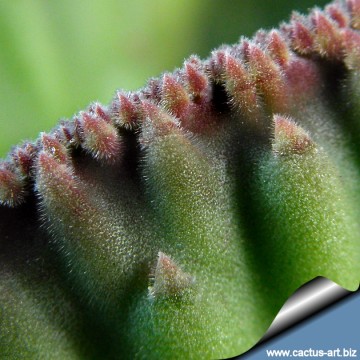 Stapelia leendertziae f. cristata Photo by: Cactus Art
Stapelia leendertziae f. cristata Photo by: Cactus Art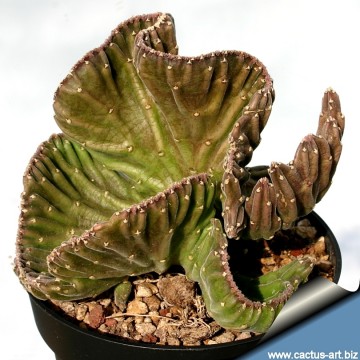 Stapelia leendertziae f. cristata Photo by: Cactus Art
Stapelia leendertziae f. cristata Photo by: Cactus ArtCultivation and Propagation: Spring: When winter ends and they begin to grow again, they will require much more water and soaking the pots will no longer put the plants at risk for rot. In the spring they will grow well in partial shade and leaving them out in the rain may provide them with the water they need.
Summer: In the summer months they will tolerate heavy rain, but will be just as happy if the season is dry. It's best to sort out the stems while the plants are resting in the summer before they begin their autumnal growth cycle. They will tolerate very hot weather outdoors as long as they are kept in filtered light and this will encourage them to flower in the Autumn. They also enjoy some fertiliser. Moving the plants as they are developing buds may cause them to spontaneously abort the flowers all together.
Autumn: In the fall keep them outdoors until the night time temperatures drop below the 5°C.
Winter: Winter care presents no problems at 5°-10° C with plenty of light. As soon as they are flowered be sure to take extra precautions to keep them dry, because damp cool conditions when the plants are resting is an invitation to fungal infections, but - according to temperatures –some occasional lit watering may be useful.
Propagation: Easiest with stem cuttings. Allow cuttings to dry a day before planting. Stems must be laid (Not buried) on gritty compost and will then root from the underside of the stems. It can also be increased from seeds sowing in spring in moist, sandy peat moss. Barely cover seeds. Seeds germinate quickly.
In any season it's best to lay the stems out for several days before replanting them and then pot them only in dry soil and with hold any water until they begin to shrivel or start growing again.
Potting medium: Since roots are quite shallow, use a cactus mix or add extra perlite or pumice to regular soil potting soil. A gritty, very free-draining compost is suitable, and clay pots help the plants to dry out between watering. Re-pot every 2 years.
Pest and diseases: Stapelia are generally fairly easy to grow, especially if kept pest-free. They are very susceptible to stem and root mealy bugs, and damage from these may well initiate fungal attack. Any time when there is a dead or dying stem in the pot it is important to remove it immediately and completely before other healthy stems can become ill too, isolate the healthy parts, dry them off, and re-root them in new compost.
Crested plant: This crested form grows quickly but becomes soon old and it is very advisable to restart every second year new plants using selected crested cuttings.
During the year prune and remove every normal branch.
Your Photos
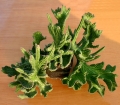
by Valentino Vallicelli

by Cactus Art
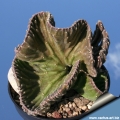
by Cactus Art





















